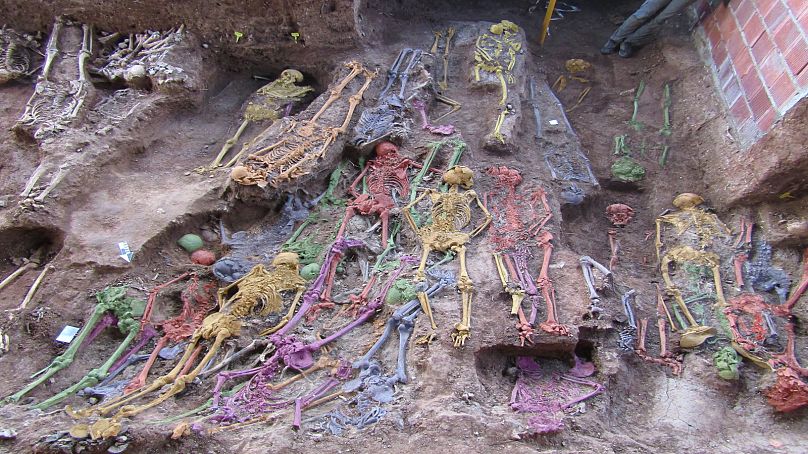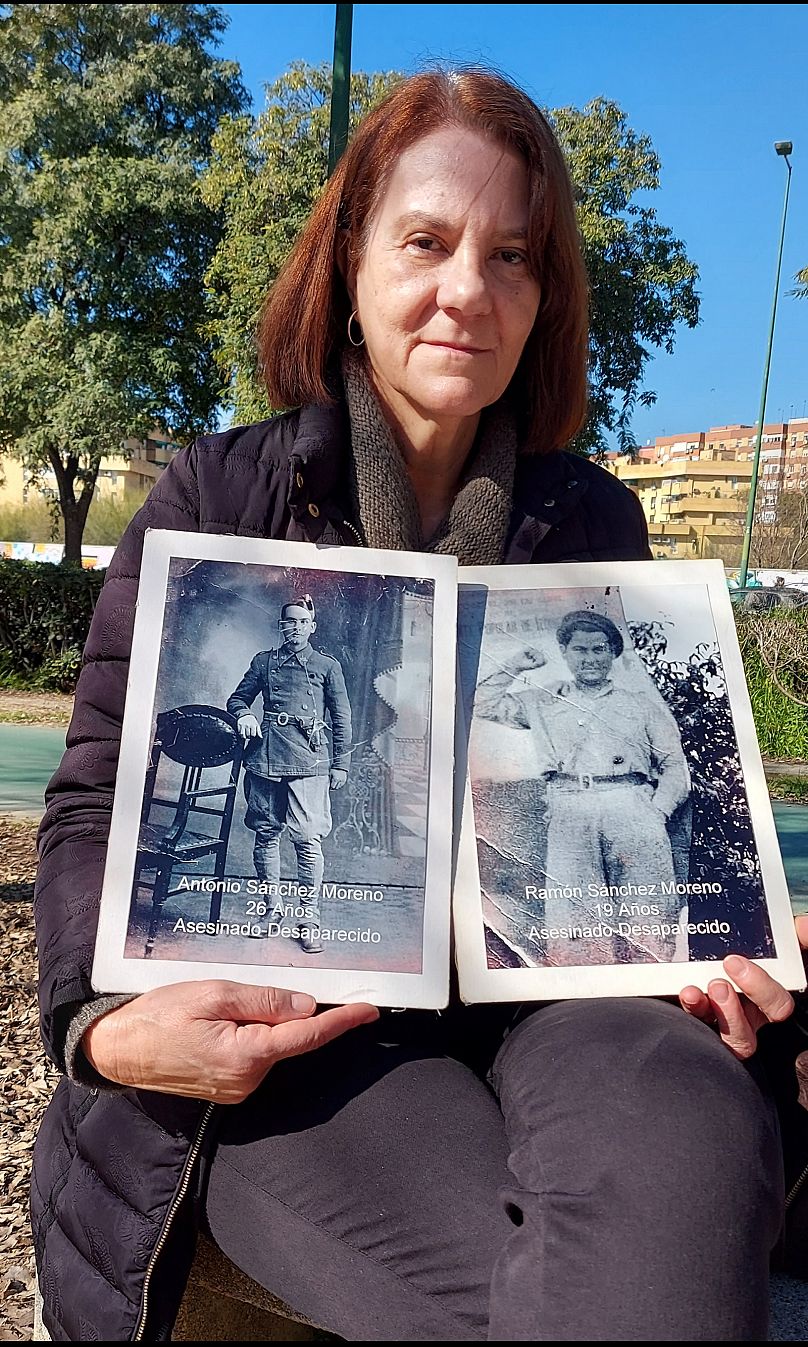Historians estimate that about 114,000 people lie in mass graves scattered across Spain massacred by supporters of Franco during or after the civil war.
Hundreds of skulls and bones, neatly packed into plastic boxes, fill the small room almost up to the ceiling.
This real-life chamber of horrors, in an anonymous room at the San Fernando cemetery in Seville, holds the remains of 1,786 people. All were dug out of one of Spain’s biggest mass graves.
Behind the bullet-ridden craniums and mangled bones at Pico Reja are the stories of those condemned to death for being on the wrong side in the Spanish Civil War between 1936-1939.
Within the boxes are human brains, preserved over 80 years since they were silenced by a single gunshot, and the short bones of children who died from malnutrition.
Pico Reja, a two-metre deep grave, lies in the corner of a huge cemetery next to flamboyant gravestones dedicated to bullfighters, flamenco dancers or, in one case, ‘The Son of the King of Gypsies’.
Three years after digging started, relatives of the dead retrieved from this mass grave will gather for a ceremony later this month to remember their loved ones.
The grim ceremony will be a closure – of sorts – but the fight goes on for justice for these people cut down by the victorious fascist forces of General Francisco Franco.
A national DNA bank
Historians estimate that about 114,000 people lie in mass graves scattered across Spain massacred by supporters of Franco during or after the civil war.
Eighty years on from one of the country’s darkest chapters, Spaniards are no nearer to resolving how to deal with their murky past.
Spain’s left-wing government last year passed the Democratic Memory Law which contains dozens of measures that Prime Minister Pedro Sánchez said would help “settle Spanish democracy’s debt to its past”.
The law will set up a census and a national DNA bank to help locate the remains of those who still lie in unmarked graves like Pico Reja.
But as Spaniards head to the polls this year in local elections in May and a national election probably in December, this law could be repealed if, as polls predict, the conservative People’s Party (PP) triumphs.
After Spain returned to democracy following Franco’s death in 1975, it passed an Amnesty Law two years later to prevent retrospective prosecutions.
Many on the Spanish right have opposed legislative efforts to deal with the wrongs of the past. Alberto Núñez Feijóo, the PP leader, has promised to repeal the Democratic Memory Law.
'We just want justice'
For Ana Sanchez, any attempt to stop her finding out what happened to her two uncles, would dash years of effort.
Antonio and Ramon Sanchez Moreno were 26 and 20 respectively when they were shot after mock trials at the start of the fascist uprising in 1936. Antonio never saw his baby son.
Sanchez, a retired teacher, believes their remains may lie in Pico Reja. Like scores of others, she has given a sample of DNA which she hopes will be matched with the remains of one or other of her uncles as part of a project organised by Seville council, the University of Granada and Aranzadi, a non-profit scientific association.
“We just want justice and to find out the truth. Not just for me but for everyone, so that we have a real democracy that does not hide these things,” she told Euronews.
Her uncles’ remains may lie in Pico Reja or another mass grave that has yet to be excavated. El Monumento, which lies close by, should be opened later this year, revealing more horrors.
But the ghosts of the past may haunt modern-day politics.
'Like something from Medieval Spain'
Paqui Maqueda, of Our Historical Memory association in Seville, fears if the PP unseat the ruling Socialists at elections in May, the conservatives will slow down plans to open El Monumento.
“It could make a difference if the PP wins the council election in Seville. They have always been against trying to find out what happened to our loved ones,” she told Euronews.
Maqueda has been fighting for years for reparation for her family which was shattered by the civil war.
Her great-grandfather Juan Rodriguez Tirado and his three sons, Enrique, Pascual and José spent years in prison camps and were persecuted by the Franco regime. The family home in the village of Carmona, near Seville, was seized.
“No Spanish government has addressed this. The (recent) Memory law was a step forward. But it was not enough. I have been denied access to the state archives to find out what really happened to my family and where they are,” Maqueda said.
“I don’t want compensation for what happened. I want reparation. My relatives were not delinquents and rapists.”
Juan Manuel Guijo, an archaeologist who specialises in bones from Aranzadi, who worked on the Pico Reja excavation, said the grim work at the graveside had taught everyone a lesson.
“It has improved (the team) as people as we have come to know the victims and their suffering and how they have been suffering for years to do this,” he said.
“At the same time, we have witnessed a horror which seems like something from Medieval Spain. We have found hundreds of children who died from malnutrition in the 1940s and people who were tortured before they died.”
As we stood in the small room, surrounded by boxes full of skulls and bones, Guijo paused before he went on.
“Sometimes you must put aside science and you have to remember the people. This is not something we are doing for heritage but for human rights,” he said.













